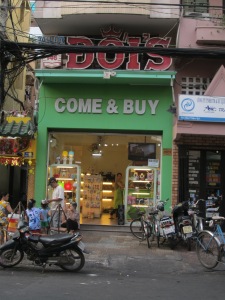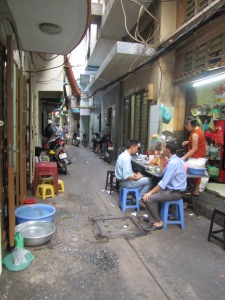So here’s something cool I came across in my internet wanderings last week: a video of American street artist El Mac‘s piece he threw up in Saigon, “Kosom by the Mekong”:
El Mac – Sai Gon, Viet Nam “Kosoom by the Mekong” from Viet Nam The World Tour on Vimeo.
Just, you know, when you start to think you’re doing something cool by travel blogging, there’s some good ole’ street artists to totally blow your shit out of water.
Aside from the images making me nostalgic for Southeast Asia, what’s so cool to me about this is the opportunity for exchange. They say all art is a conversation, right? And us writers prattle on about authentic experiences and living like a local, but street art really offers the opportunity for that in a way that writing necessarily can’t—you know, the good ole’ Tower of Babel.
El Mac isn’t the first dude to be doing this sort of stuff: I got a chance last summer to catch up with Gaia about his work in Seoul, and of course JR is out there giving everyone’s heart a boner with his work. And I guess part of what’s so exciting to me about it is the chance for dialogue it offers—as though the artists were saying: “Hey, I’m here in your country, and this is what I see and this is how I express it, in my culture. And I’m gonna leave it here, for you to see and have, and what do you think of all that?”
And the question may not be being asked to me, but I think it’s fucking awesome.
And I wonder if there’s a way us writers could do something close, even with the limitations of language—if we could find a way to have a similar exchange, in the earnest and uncomplicated way one will point to an object and say it their language, then point to you, and you’ll say it in yours, and you’ll both smile at the difference of it, the arbitrariness of it—neither one’s way right or wrong, but just different, another little glimpse into the vast diversity of human expression.
I’m open to suggestions.
Read more about El Mac’s work here.







Recent Comments